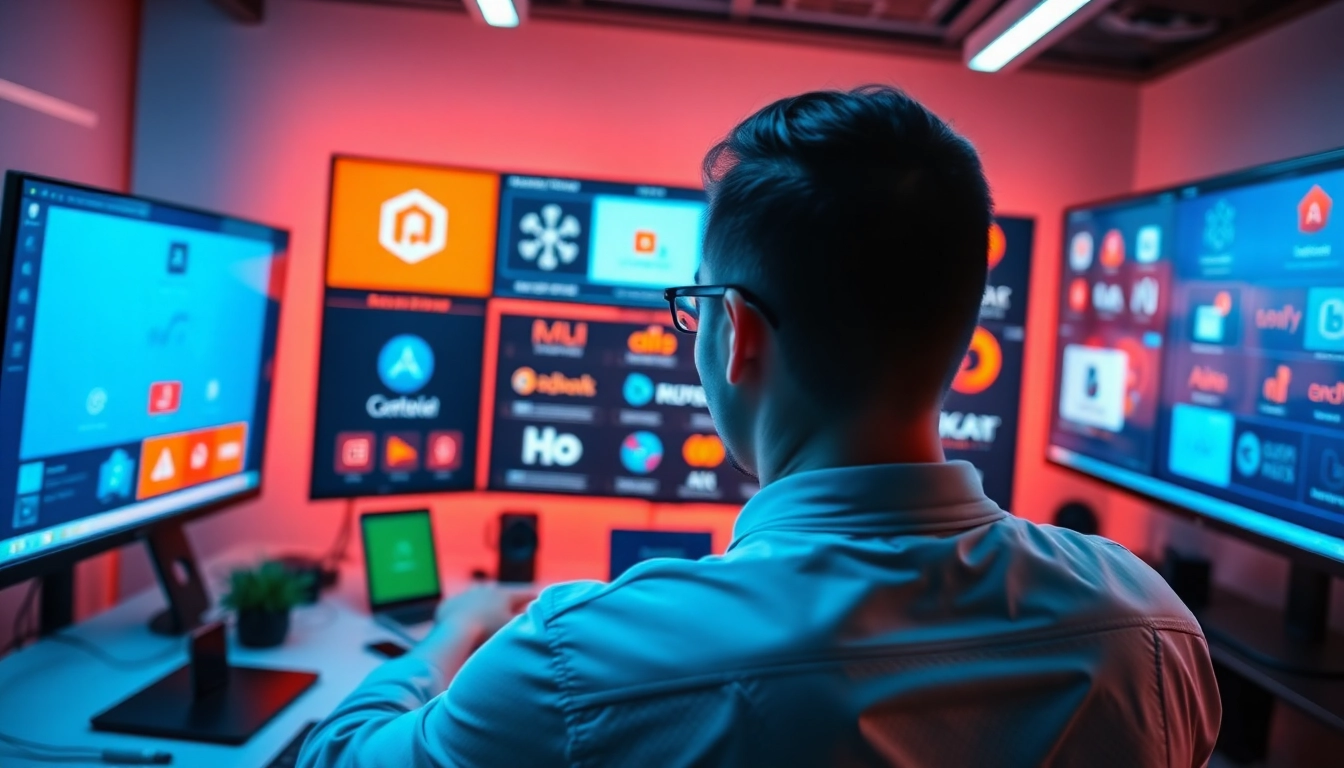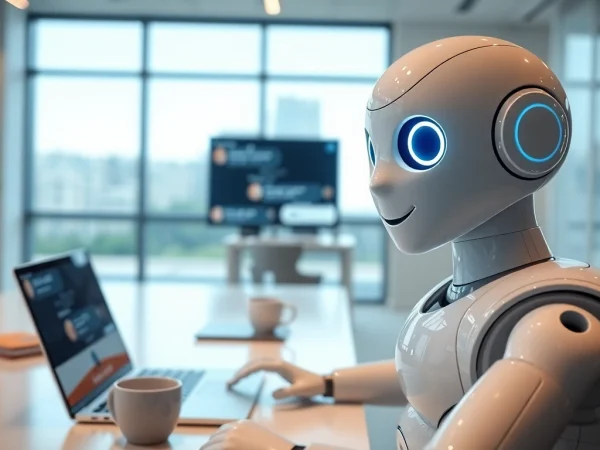Mastering Custom AI Logo Design: From Concept to Creation
Understanding Custom AI Logo Design
What is Custom AI Logo Design?
Custom AI logo design refers to the process of creating unique and personalized logos using artificial intelligence technologies. Unlike traditional logo design, where creativity is solely driven by a human designer, AI logo design utilizes algorithms and machine learning to generate design options based on the input data provided by the user. This can include elements such as business name, industry, preferred colors, and design style. The custom AI logo design process allows businesses to quickly explore a vast array of design possibilities while keeping costs low and turnaround times short.
Benefits of Using AI for Logo Creation
Adopting AI for logo design offers numerous benefits that can significantly enhance the branding efforts of any business. Here are some key advantages:
- Speed: AI tools can generate a variety of logo options in mere minutes, allowing businesses to receive a range of concepts quickly and efficiently.
- Cost-Effectiveness: Traditional logo design can be expensive, but using AI technology often offers a more budget-friendly alternative, making professional design accessible to small businesses.
- Diversity of Options: AI generators often provide multiple designs based on the set inputs, ensuring that users can choose from a wide range of styles and concepts that fit their brand identity.
- Customization: Many platforms allow users to tweak the generated logos, ensuring the final design aligns with their vision.
- User-Friendly Interfaces: Most AI logo makers are designed to be intuitive, enabling users with little to no design experience to navigate easily.
Key Features of Leading AI Logo Design Tools
As more businesses turn to AI for logo design, several features have emerged as staples among the most popular tools. Essential features include:
- Smart Algorithms: Advanced algorithms analyze design elements to create logos that are not only visually appealing but also relevant to the user’s industry.
- Template Utilization: Many tools offer templates that can be fully customized, allowing users to streamline their design process while still achieving a unique outcome.
- Brand Consistency Tools: Some platforms provide suggestions for color palettes and typography that align with the user’s established brand identity.
- Export Options: Quality output options for different formats (like PNG, SVG, etc.) are vital for usability across various digital and print platforms.
- Real-time Editing: Features allowing users to make real-time adjustments are crucial for enhancing creativity and ensuring satisfaction with the final product.
How to Choose the Right AI Logo Design Tool
Comparative Analysis of Top AI Logo Makers
When selecting an AI logo design tool, understanding the unique features of each option can help businesses make informed decisions. Consider the following popular platforms:
- Canva: Known for its user-friendly interface, Canva offers customizable logo templates and a vast design library, making it easy for users to create visually stunning logos.
- Looka: This tool employs AI to analyze user preferences and generates logos that can be adjusted in real-time, providing a great balance between AI functionality and user control.
- LogoAI: Users can input their business name and description to receive tailored logo concepts quickly, focusing on personalization.
- Brandmark: This advanced tool generates logos using complex algorithms, ensuring a unique design experience and high-quality output.
- Design.com: This platform allows users to create logos effortlessly, leveraging AI’s capabilities to deliver unique designs rapidly.
Factors to Consider When Selecting a Tool
Choosing the right AI logo maker involves evaluating several critical factors. Here are the most important ones to consider:
- Usability: The user interface should be intuitive and easy to navigate, ensuring a smooth design process.
- Customization Options: Check whether the tool offers flexibility in design adjustments to match your specific requirements.
- Pricing: Compare pricing structures, including any potential hidden fees or limitations on usage after purchase.
- Output Quality: Assess the resolution and quality of the logo files you will receive. High-definition files are a must for professional use.
- Customer Support: Reliable customer service can be vital for resolving issues that arise during the design process.
User Reviews and Success Stories
User feedback can provide valuable insights into the effectiveness and reliability of AI logo design tools. Look for testimonials on various platforms or forums to gauge satisfaction levels. For instance, many businesses have successfully used Looka to craft logos that capture their brand essence, while Canva has garnered praise for its combination of simplicity and quality. Success stories often reveal real-world applications of these tools, demonstrating their impact on branding and marketing strategies.
Step-by-Step Guide to Creating Your Custom AI Logo
Defining Your Brand Identity
The first crucial step in designing a custom AI logo is understanding your brand identity. This involves:
- Identifying your target audience: Knowing whom your brand is addressing better informs your design choices.
- Establishing your brand values: Your logo should reflect the core values and ethos of your brand.
- Researching competitors: Analyze competitors to identify design trends and gaps in their branding that you can leverage.
Utilizing AI Features Effectively
Once you’ve established your brand identity, navigating the chosen AI logo maker effectively involves several steps:
- Input your data: Begin by entering your brand name and any keywords related to your industry or desired style.
- Select criteria: Choose colors, fonts, and styles that resonate with your brand identity.
- Review generated designs: Assess the AI-generated logos and pick those that catch your eye.
- Customization stage: Make adjustments to colors, layouts, and other aspects to refine the logo to your liking.
Exporting and Finalizing Your Logo
Once satisfied with your logo, the final step is exporting it for use. Here are best practices for this stage:
- Choose the right formats: Export logos in multiple formats like JPEG, PNG, and SVG to cover various uses.
- Check resolutions: Ensure that the exported files are high-resolution for print and web use.
- Keep backups: Save original design files and different variations for future use.
Common Challenges in Custom AI Logo Design
Overcoming Design Limitations
While AI tools can produce stunning logos, they may sometimes fall short in specific areas due to their reliance on algorithmic patterns. To overcome limitations, users should:
- Provide detailed input: The more specific the information provided to the AI, the better the output.
- Iterate extensively: Don’t hesitate to explore multiple iterations and refine designs based on feedback from peers and branding experts.
Ensuring Unique Brand Representation
A critical concern in AI-generated logos is the potential for generic or similar designs. To ensure uniqueness:
- Use custom parameters: Define attributes that are distinctly aligned with your brand to help direct the AI’s output.
- Incorporate human creativity: Consider using AI as a starting point, then allow human designers to modify and create a truly unique logo.
Dealing with AI Biases in Design Output
AI systems may exhibit biases based on their training data, impacting the design outputs. To address this issue, businesses should:
- Evaluate outputs critically: Analyze the suggested logos for cultural relevance and inclusiveness.
- Diverse feedback loops: Solicit input from diverse teams to ensure designs resonate with a broad audience.
Future Trends in Custom AI Logo Design
Emerging Technologies in Logo Design
The landscape of logo design continues to evolve with advancements in technology. Trends to watch for include:
- Improved Machine Learning: As machine learning techniques advance, AI logo generators will produce even more sophisticated and contextually relevant designs.
- Integration of AR/VR: Expect to see tools that allow users to visualize logos in augmented or virtual reality settings, enhancing engagement.
- Nuanced AI Algorithms: Future tools will likely feature more nuanced algorithms able to take a variety of factors into account, such as emotion and cultural significance.
Impact of AI on Creative Industries
The rise of AI has significant implications for creative fields, including logo design. The accessibility of these tools inflates the number of potential designers, thereby democratizing creativity. However, this also raises concerns about the dilution of traditional design roles. Nonetheless, creatives can leverage these tools to enhance their workflow and generate novel ideas more efficiently.
Predictions for AI Innovations in Branding
Looking ahead, AI is set to continue reshaping branding strategies. Predictions include:
- Greater Personalization: AI will advance in its ability to create highly tailored branding solutions that resonate on a personal level with consumers.
- Dynamic Branding Solutions: Expect AI tools that adapt logos and branding elements based on real-time user feedback and market trends.
- Seamless Integration: Future tools will likely integrate seamlessly with social media and marketing platforms, optimizing branding efforts across various channels.










